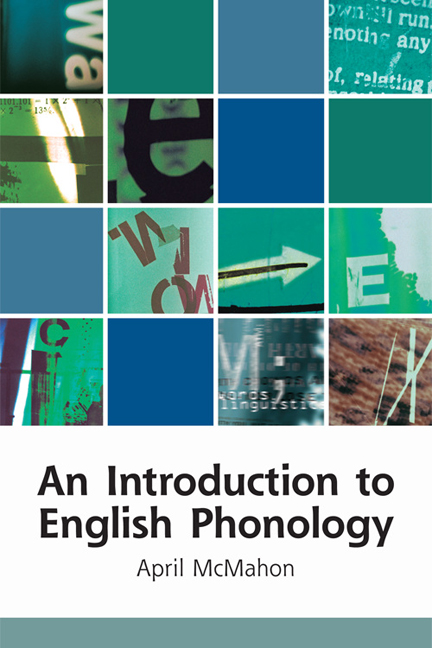Book contents
- Frontmatter
- Contents
- To colleagues
- 1 Sounds, spellings and symbols
- 2 The phoneme: the same but different
- 3 Describing English consonants
- 4 Defining distributions: consonant allophones
- 5 Criteria for contrast: the phoneme system
- 6 Describing vowels
- 7 Vowel phonemes
- 8 Variation between accents
- 9 Syllables
- 10 The word and above
- Discussion of the exercises
- References
- Index
- Frontmatter
- Contents
- To colleagues
- 1 Sounds, spellings and symbols
- 2 The phoneme: the same but different
- 3 Describing English consonants
- 4 Defining distributions: consonant allophones
- 5 Criteria for contrast: the phoneme system
- 6 Describing vowels
- 7 Vowel phonemes
- 8 Variation between accents
- 9 Syllables
- 10 The word and above
- Discussion of the exercises
- References
- Index
Summary
The same but different again
As we saw in the last chapter, most of the features which work well in classifying and describing consonants are entirely inappropriate for vowels, while vowels vary in dimensions (such as tongue height) which are not relevant for consonants. However, when we turn to the criteria for establishing phonemes, and the exceptions to these reviewed in Chapters 2 and 5, it turns out that vowels and consonants behave very similarly indeed. The sections below therefore fulfil a dual role of providing more information about vowels, while allowing some revision of notions like complementary distribution, allophonic rules, free variation, neutralisation and phonetic similarity, which were first introduced mainly in connection with consonants.
Establishing vowel contrasts
Minimal pairs
Minimal pairs and the commutation test are the main tools available to the phonologist in ascertaining phonemic contrast among both consonants and vowels. A minimal pair list for SSBE vowels appears in (1).
The list above provides evidence for almost all phonemically contrastive vowels of SSBE, with a very small number of exceptions. Since schwa only appears in unstressed syllables, where most of the other vowels cannot appear, we must make do with near-minimal comparisons in this case, contrasting the second, unstressed syllable of sherbet with the various stressed syllables in (1). The short vowels /υ/ and /ɒ/, and the centring diphthongs, which were listed as SSBE vowels in the last chapter, do not appear in the selected context /b-t/; but the additional data in (2) shows that /υ/ and /ɒ/ on the one hand, and the three centring diphthongs on the other, contrast both with one another and with representative members of the list in (1). Phonemic contrast is a transitive relationship, meaning that if phoneme a contrasts with phoneme b, and phoneme b contrasts with phoneme c, then phonemes a and c also contrast: this means that if a contrast can be established between one of the ‘left-out’ vowels and any vowel in (1), then that vowel can be taken as contrasting with all the vowels in (1).
Sets of minimal pairs like this may work very well for one accent, but not for another.
- Type
- Chapter
- Information
- An Introduction to English Phonology , pp. 79 - 91Publisher: Edinburgh University PressPrint publication year: 2016



